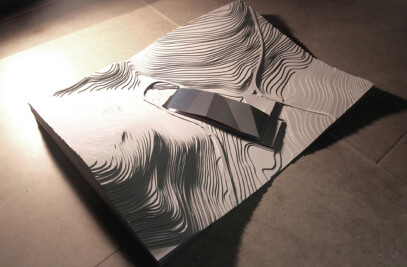1.The reuse of two former artisan sheds is the opportunity to score an anonymous urban environment and degraded by the power and strength of the architecture. In this project we used crude materials to make the surfaces very expressive.

2.Concetta D'Alessandro Foundation is a non-profit organization that deals with treatment and rehabilitation of people with disabilities. The program included the reuse of two former artisan sheds for rehabilitation and training.

The ground floor it has been converted into a guesthouse and the first floor, under the great vaulted roof, it was built a large space for group activities.Two low volumes host the services and form an entrance vestibule to the main hall. The realization of this hall has necessitated the addition of a lift and a new staircase. This body has been turned into a new large facade characterized by a skin obtained through the recycling of plastic boxes for the collection of the oranges.

3.The new body, through his use of color and lighting, has thus assumed the role of signal, a symbol recognizable to distance in the anonymous surrounding cityscape.

This project, on the one hand, is the advancement of research, started ten years ago, about the reuse of plastic crates as building material for architecture, on the other hand is a way to put the shape and the ornament of architecture as a powerful tool for promoting social actions of great value.This facade ennobles poor materials transforming them, through drawing and weaving, into a powerful aesthetic signal that strengthens the building identity.

4. The space of the main hall is shaped by a great vault that stretches like a wrinkled cloth under the roof. The vault remains outstanding on the plane defined by the wooden planks of the floor. The new body has a steel structure and a cladding made from plastic boxes (used for the harvest of oranges) in two shades of green. The boxes are like pixels of a texture featuring a plot drawn by parallel diagonal lines of a light green.
























































